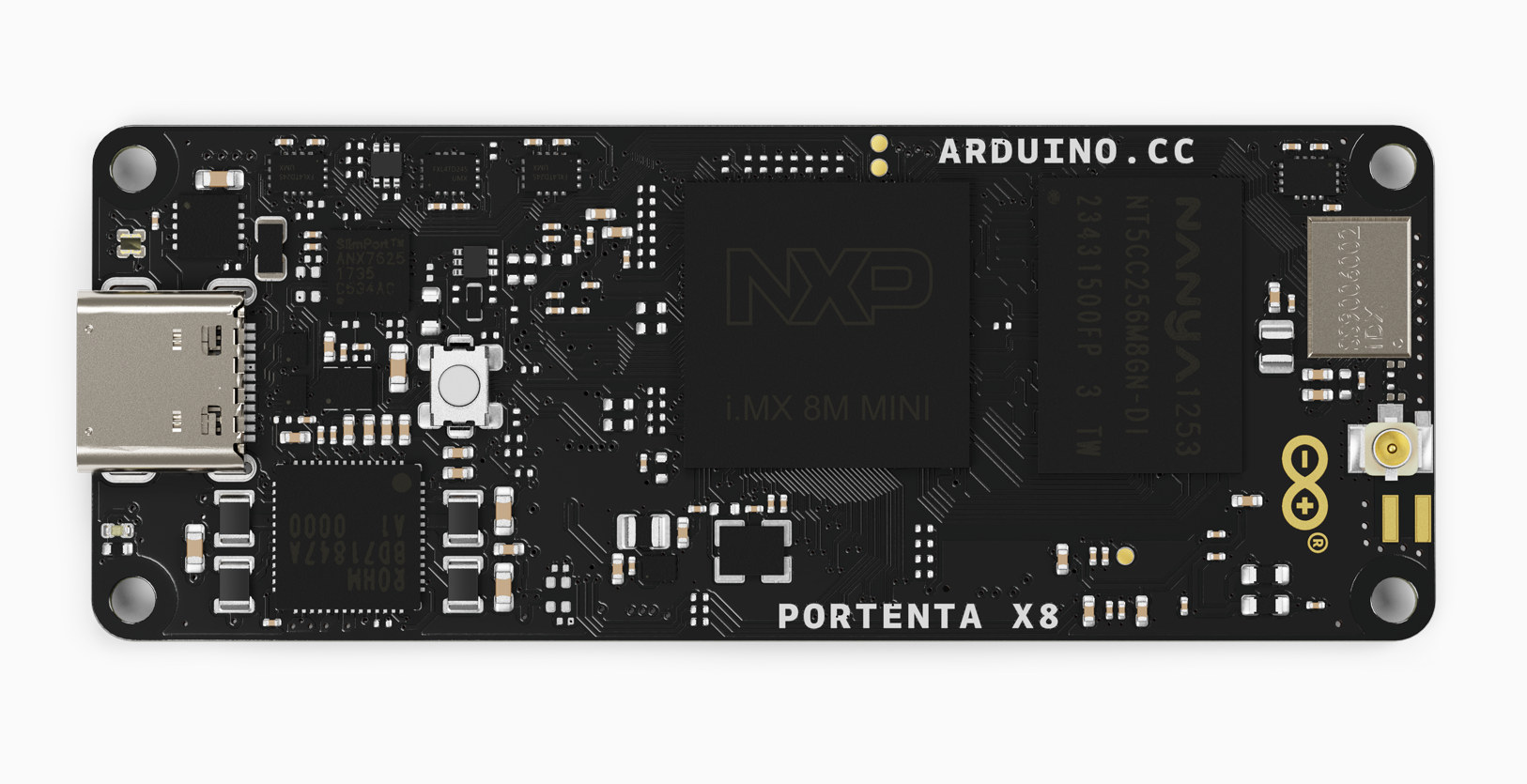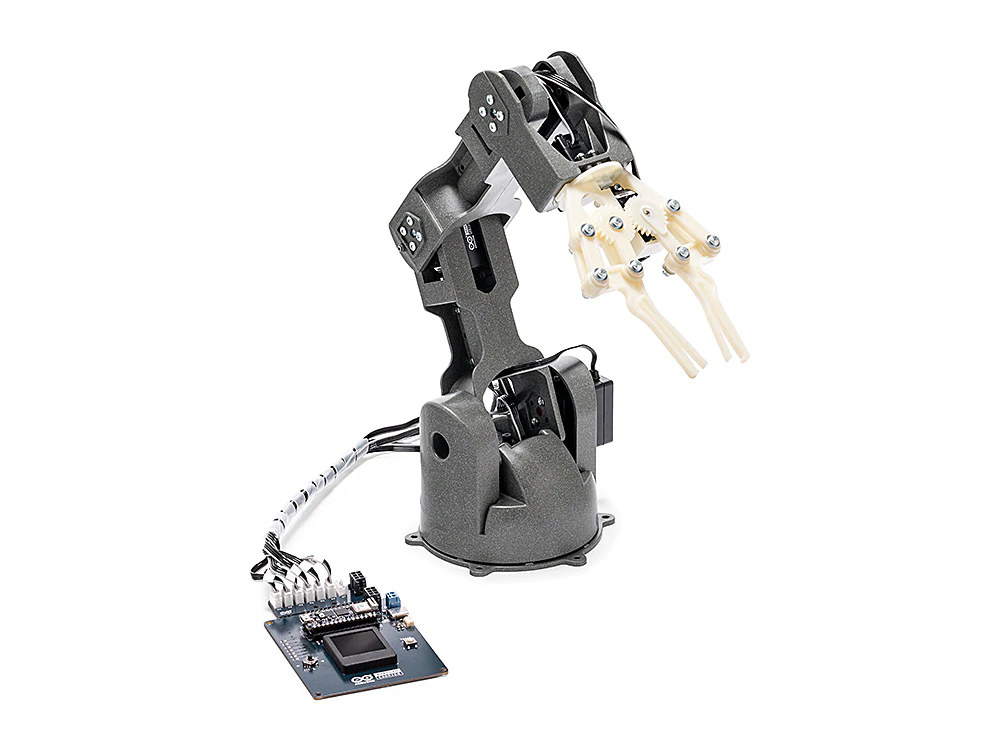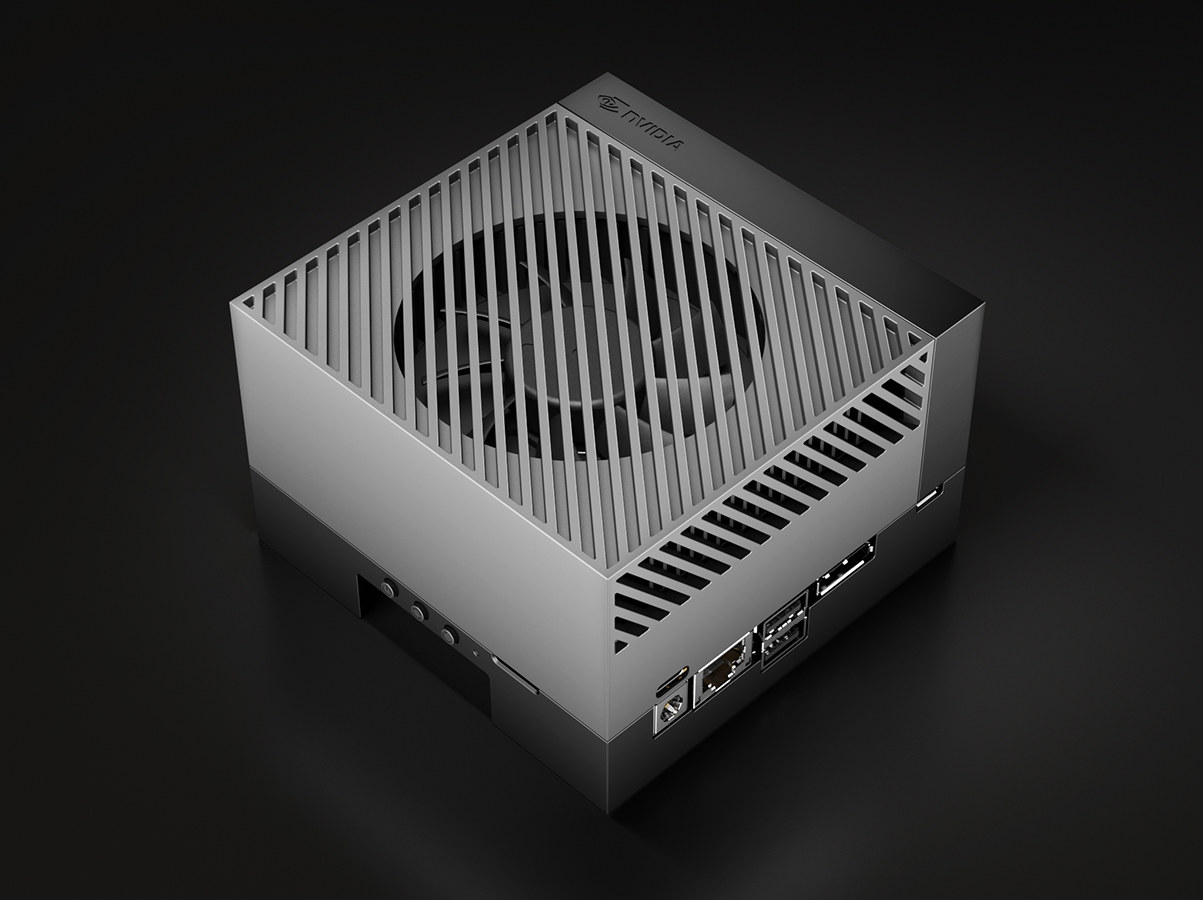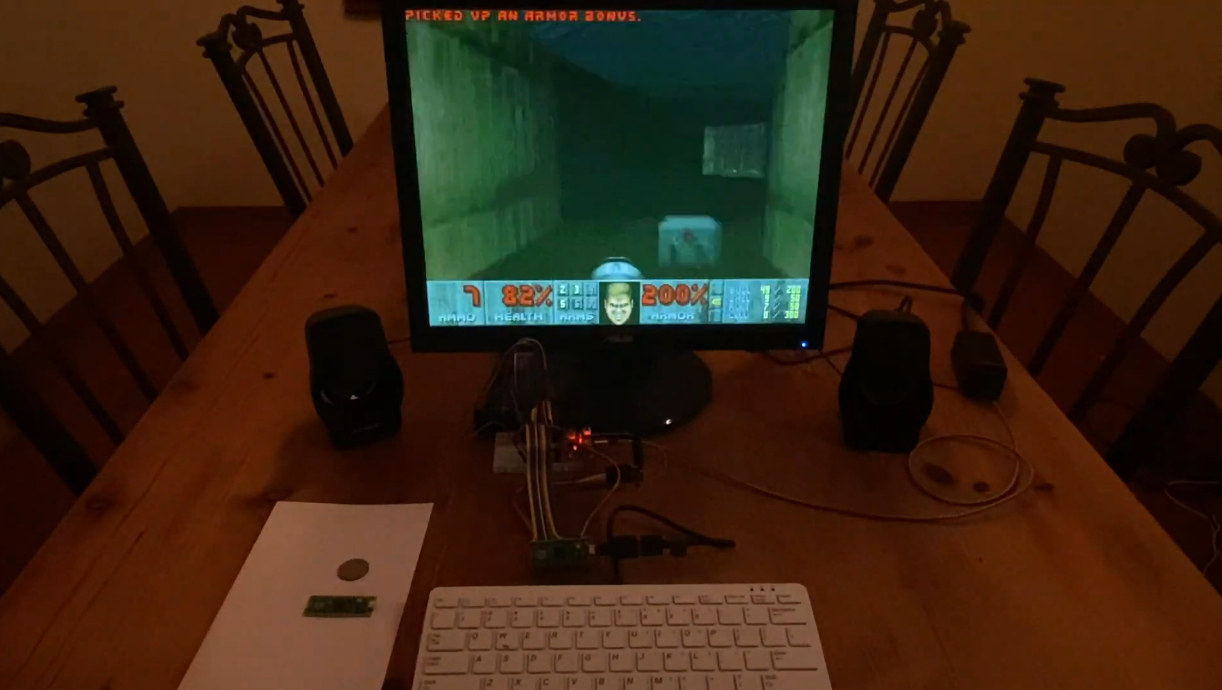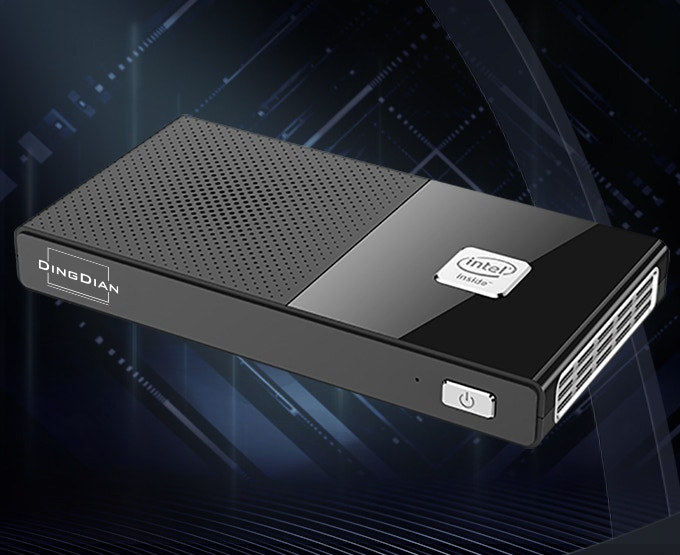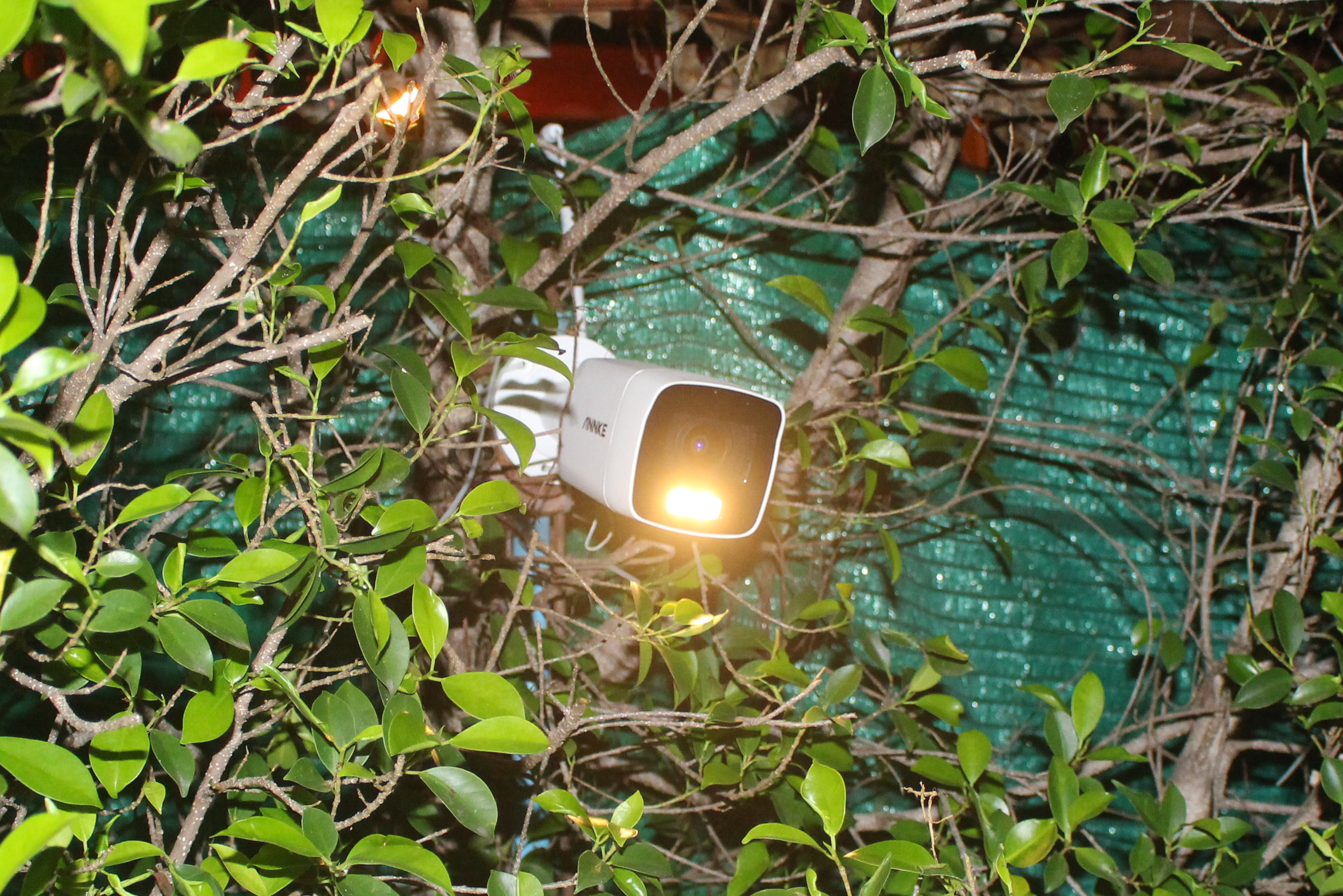OASIS is a Smart Home operating system based on ROS 2 that currently implements computer vision, input streaming, and general automation features, and can be integrated into Kodi media center. The operating system was recently released by Garrett Brown (a.k.a. garbear or eigendude), who is also known for being the RetroPlayer developer from Team Kodi/XBMC, and provides a complete implementation of the Firmata protocol for communicating with Arduino boards, plus additional support for temperature and humidity sensors, I2C, servos, sonar, SPI, stepper motors, and 4-wire CPU fans. Two main use cases are computer vision and input streaming at this time. The illustration above shows the former with the Kinect 2 driver ported to ROS 2, a background subtractor on all camera feeds using bgslibrary C++ background subtraction library, and Kodi as the visual interface. The second, input streaming, can be seen below with a Lego train (including a Falcon spaceship!) […]
Portenta X8 is the first Arm Linux Arduino board
In simpler times, Raspberry Pi was making Arm Linux SBC’s, and Arduino MCU boards, but after Raspberry Pi got into the MCU business last year, it’s now time for Arduino to introduce its first Arm Linux board with the Arduino Portenta X8. The new board since comes with the same STM32H7 Cortex-M7/M4 microcontroller found in the Portenta H7 boards, but add a more powerful, Linux-capable NXP i.MX 8M Mini processor with four Cortex-A53 cores and a Cortex-M4 core, coupled with 2GB RAM and a 16GB eMMC flash. Arduino Portenta X8 specifications: SoC – NXP i.MX 8M Mini Arm Cortex-A53 quad-core up to 1.8 GHz,1x Cortex-M4 real-time core up to 400MHz. Microcontroller – STMicro STM32H747AII6 Cortex-M7 @ 480 MHz + M4 @ 240 MHz MCU with 2MB dual-bank Flash memory, 1 MB RAM, Chrom-ART graphical hardware accelerator System Memory – 2GB LPDDR4 Storage – 16GB eMMC flash Connectivity Gigabit Ethernet interface […]
Arduino Braccio++ robotic arm is designed for high-school and university students
Arduino Education has just launched the Braccio++ robotic arm for advanced students in high school or at university in order to let them experiment with a 6 DOF, industrial, assembly line-inspired robot. The new robotic arm provides an upgrade to the Tinkerkit Braccio robot and has been designed to assist in teaching real-world manufacturing techniques,topics such as physics and robotics, and concepts like motions, forces, torque, gear ratio, stability, and weight of payload. The Arduino Braccio++ is comprised of the Braccio carrier board equipped with an Arduino Nano RP2040 Connect that controls six Arduino RS485 Smart Servo Motors with specifically four SR418D servo motors for the arm joints, and two SR312 servo motors for the claw. Four lessons and two projects are included in the kit, and it’s made for up to three students. Arduino says the new robotic arm is made of recycled and eco-friendly materials with the […]
NVIDIA launches Jetson AGX Orin Developer Kit, Orin NX modules, and Isaac Nova Orin AMR platform
NVIDIA Jetson AGX Orin module was first introduced in November 2021, but the company has now officially launched the Jetson AGX Orin Developer Kit, andunveiled the lower cost Orin NX modules still with 70 TOPS or more, and the Isaac Nova Orin AMR (autonomous mobile robot) reference platform. NVIDIA Jetson AGX Orin Developer Kit Jetson Orin AGX developer kit specifications: Jetson AGX Orin module with CPU – 12-core Arm Cortex-A78AE v8.2 64-bit processor with 3MB L2 + 6MB L3 cache GPU / AI accelerators NVIDIA Ampere architecture with 2048 NVIDIA CUDA cores and 64 Tensor Cores @ 1.3 GHz DL Accelerator – 2x NVDLA v2.0 Vision Accelerator – PVA v2.0 (Programmable Vision Accelerator) AI Performance – Up to 275 TOPS (INT8) @ 60W Video Encode – 2x 4K60 | 4x 4K30 | 8x 1080p60 | 16x 1080p30 (H.265) Video Decode – 1x 8K30 | 3x 4K60 | 7x 4K30 | […]
1-Stream IPTV streaming software offers an alternative to Xtream Codes
1-Stream is an IPTV streaming platform with smart load balancing that allows providers to scale their service and integrates geo-location to ensure content delivery from the closest available server for quicker load times and less buffering. One popular professional IPTV platform used to be Xteam Codes for which I wrote a detailed four-part review but they started having trouble on September 18, 2019 with Xtream Codes IPTV Panels having a legal dispute related due to piracy, despite not providing any streams, and it seems they may never come back online, as their latest update contesting the claims date from January 2021. A lot has happened during these two and a half years in the IPTV scene with many alternatives, most of them with another similar name but based on almost the same old, PHP-based vulnerable platform found in the former Xtream Codes Panel version 2.9.3, which could never provide good […]
Doom ported to Raspberry Pi RP2040
Doom has been ported to all sorts of platforms, including ESP32 platforms with 4MB PSRAM but “RP2040 doom” port of Doom to the Raspberry Pi RP2040 is more challenging, since RAM is limited to the measly 264KB built-in into the microcontroller, and for boards with only 2MB flash like the Raspberry Pi Pico, storage capacity becomes an issue. But Graham Sanderson solved all those issues by compressing the data, changing the code to use less RAM, making full use of the two Arm Cortex-M0+ cores, both overclocked at 270 MHz, in order to run Doom (DOOM1.WAD) on Raspberry Pi Pico at 320×240 resolution @ 60 fps, and the full Ultimate Doom and DOOM II WADs expected to fit into Raspberry Pi RP2040 boards with 8MB SPI flash. The port was based on Chocolate Doom, OPL2 emulation for audio support was derived from the emu8950 project, and sound effects were compressed […]
DingDian S3 – A Pocket-sized Intel Pentium N6000 mini PC (Crowdfunding)
DingDian S3 is an ultra-compact, pocket-sized mini PC powered by an Intel Pentium Silver N6000 Jasper Lake processor, and equipped with 16GB RAM, and up to 1TB SSD with two M.2 sockets for either SATA or NVMe storage. The mini PC also includes a 2.5GbE port, an Intel AX201 WiFi 6 and Bluetooth 5.2 M.2 module, a 4K-capable HDMI 2.0 port, four USB ports, and a 3.5mm audio jack. DingDian S3 specifications: SoC – Intel Pentium Silver N6000 quad-core Jasper Lake processor @ 1.10 GHz / 3.3 GHz (Turbo) with Intel UHD graphics 605; 6.5W TDP System Memory – 16GB LPDDR4 Storage – 128GB SATA SSD, 512GB or 1TB NVMe SSD Video Output 1x HDMI 2.0 port up to 4Kp60 1x DisplayPort Alt Mode via USB-C port up to 4Kp60 Audio – 3.5 audio jack, digital audio via HDMI Networking 2.5GbE via Intel i225 controller Dual-band 802.11b/g/n/ax WiFi 6 and […]
ANNKE NC800 security camera review – Part 2: color night vision, vehicle & human detection
I started the review of ANNKE NC800 security camera with color night vision last month by checking out the specifications and package content. I’ve now had time to install and test the camera with a focus on night image quality and person and vehicle detection. ANNKE NC800 installation The camera should be powered by a PoE injector, but since I don’t have any spare one, I just used an Ethernet cable and a 12V power supply. The kit includes bits to make sure the Ethernet cable is waterproof, but I would have had to cut the plastic bit on top of my connector, so I skipped that part. The cable is also protected from rain and sun where I’ll install it. I also installed a MicroSD card after formatting it to FAT32 to make sure it is recognized by the system, but it may not be necessary as the card […]



